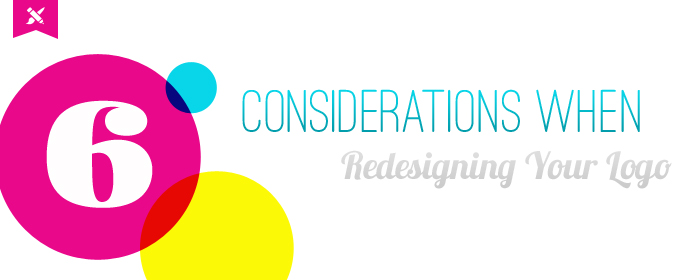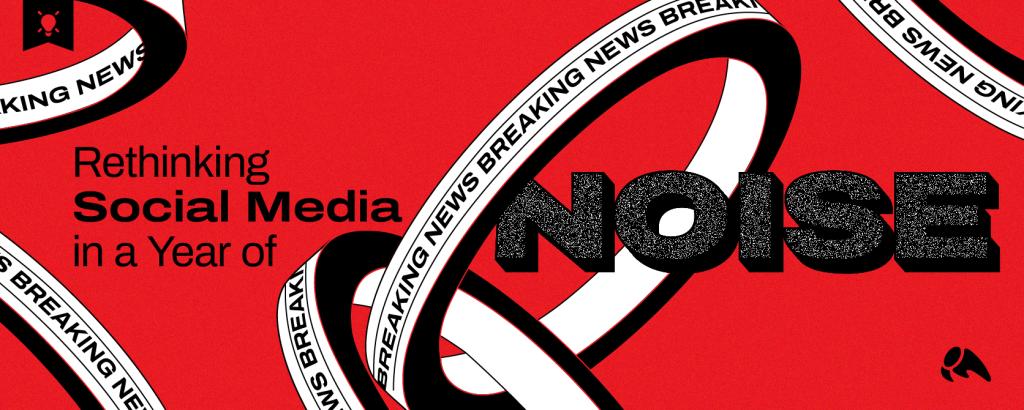
If your website is the face of your company, then your logo is most certainly the voice. It’s your identity. In those first initial moments when a user lands on your website, your logo has the ability to establish trust, to convey your message, and to present enough visual interest that someone will want to take the time to get to know your company better.
But only if you create that interest through design.
One of my daily struggles as Creator Director at Overit is helping clients to understand the importance of creating a powerful logo. Too often we think of a business logo as just an image or we hold the belief our logo doesn’t truly matter. All aspects of design matter when it comes to conveying your brand message. The logo you create and use to represent your brand online and off will have as much influence on the perception of your company as your website or other marketing materials.
Below are some considerations to keep in mind when redesigning your logo.
Company Message & Values
Great logos are built on two things – a great concept and great design. The concept has to come first.
As mentioned, the goal of your logo should be to convey the underlying messages and values that are associated with your brand. Who are you in your market and what emotions are you trying to evoke? What makes your brand unique?
To help construct this, I often recommend the client write down a list of words they feel best describes their brand, how others perceive it, or what they want their brand to become. Based on this list we’re able to create and identify a conceptual direction, which is then used as the foundation for where we take the logo.
For example, if I were to create a list of terms that described Overit, the list may look like this:
- Innovative
- Digital
- Creative
- Integrated
- Rock stars
- Rebellious
- Exceptionally Talented
Competitive Research
Before you commit to a new design, take a look at your competitive landscape. How are your competitors identifying themselves? What are they calling attention to about their brands or what are they NOT calling attention to? What logos exist that you feel work well?
The purpose of doing competitive research is never to copy or recycle efforts, but to help you get an idea of the types of logos you prefer, what concepts are too crowded, and where you may want your logo to go.
This is also the point in the process where we’ll start asking you questions to help you hone in on your brand identity. Some things we may throw at you include:
Are you traditional vs cutting edge?
Static vs evolutionary?
Reserved vs in your face?
Your answers to these questions will have a significant influence on colors, typography, how you talk about yourself, and other areas of your design and branding.
Is Your Logo Changing…How Much?
Remember when JC Penney changed its logo and the entire Web went into an uproar? Or when Starbucks updated and experts screamed the brand was unrecognizable?


When rebranding and redesigning your logo, it is important to evaluate any equity you may have with your current logo and/or assets. This evaluation will be a strong factor in how the design is approached. Is it an update to the existing logo, or a complete redesign? Often there is hesitation about creating a brand new logo and how consumers will follow and understand the transition. With a smart strategic marketing plan in place, a suitable rollout can be determined and in fact lead to opportunities in expanding consumer base. A redesign should be noticed and talked about. Spreading the word facilitates that transition and increases consumer awareness.
Web & Social Media Considerations
It doesn’t take much to notice the drastic impact the Web has had on logo composition. As designers and business owners, we didn’t have to worry about this before to such an extent. Now we do. And that’s not going away.
During your design process, it’s vital you factor in how and where your logo will be used. When considering usage on the Web, such as in banner ads, social media platforms and application icons, the structure of the logo and composition of the elements need to be thought out and be flexible to accommodate such uses. Your logo should be adaptable enough to work within color restraints and budgetary limitations when printing, and adapt to flourish in a digital platform with little color constraints and a need for quick, impactful user engagement. It should work as well on a banner ad as it does on a sign marquee.
These all impact the design process and when considered, result in a more successful, usable mark.
How it Will Integrate
Your logo will identify your brand wherever your logo appears and needs to integrate seamlessly into your marketing, whatever form it may be taking at the time. Because of this, your logo should be built hand-in-hand with your other design elements including typography, imagery, color palettes and messaging to create a unified voice and brand image. Visual and conceptual queues can be taken and shared amongst these elements to create a cohesive feel that leaves a resonating message to with the consumer.
Are You Being Accidentally Trendy?
Today’s hottest trends will be tomorrow’s saddest clichés. When updating your logo design, focus on creating something that is timeless and will represent your brand as proudly five years from now as it does today. Ignore the latest trends and gimmicks and focus on creating something that truly represents your brand and your message. Stay true to your voice and your customers and you’ll likely stay clear of the dreaded “trying too hard” logo.
Creating a logo sounds like an easy task. But the truth is a lot consideration, soul-searching and careful thought must go into your logo design to ensure that you’re creating a mark that will stand the test of time, building brand equity and creating a memorable experience for your audience.





